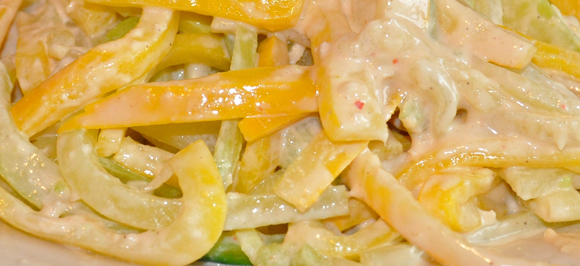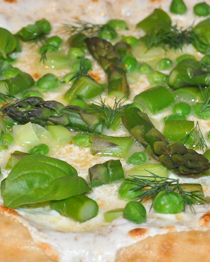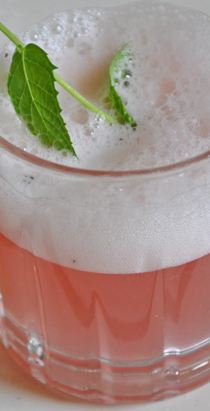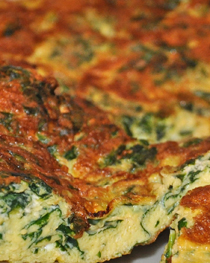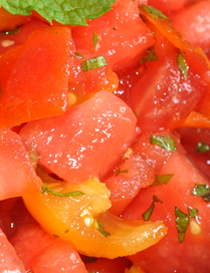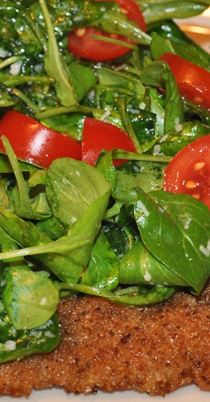August 6, 2022. All calories are not created equal. If you want to lose weight and keep it off, what you eat is probably more important than how much you eat. Because what you eat affects your rate of “energy expenditure”: how many calories you burn each day while you’re sitting, standing, walking and sleeping. Here’s how you do the math.
The good news: the best results don’t come from cutting out all carbs or all fat. The best results come from lowering your diet’s glycemic load. Which means you get to enjoy a varied diet full of things you enjoy eating. No deprivation from cutting out whole categories of foods.
The Journal of the American Medical Association just published this study by the Obesity Prevention Center at Boston Children’s Hospital. “Research shows that only one in six overweight people will maintain even 10 percent of their weight loss long-term. The study suggests that a low-glycemic load diet is more effective than conventional approaches at burning calories (and keeping energy expenditure) at a higher rate after weight loss … The very low-carbohydrate diet produced the greatest improvements in metabolism, but with an important caveat: This diet increased participants’ cortisol levels, which can lead to insulin resistance and cardiovascular disease. The very low carbohydrate diet also raised C-reactive protein levels, which may also increase risk of cardiovascular disease.”
So if you want to keep weight off in a Way that minimizes the risk of diseases that usually come right along with overweight and obesity, start making and eating more meals with relatively low glycemic loads. Like the ones in today’s right column.
Glycemic Load and Glycemic Index
The Index (GI) is a measure of how quickly and how high a food boosts your blood sugar. The Load (GL) measures how much of it is there to do the boosting.
I’m always on your case to make your own fruit-based soda pop because canned and bottled sodas are the worst things that most us regularly swallow, in terms of GI and GL.
Take my very sweet-tasting Watermelon-Peach-Ginger-Mint Pop. Its flavor base’s fruit sugar (fructose) has a minimal effect on blood sugar. Its GI is 15 (55 and below is “Low”). Eight ounces of it has a GL of less than 4. When you dilute it with soda water, an 8-ounce glass has a GL of 1 or 2, depending how strong you mix it.
Coke’s sweetener is high fructose corn syrup. Coca Cola’s Glycemic Index is 68; an 8-ounce serving delivers a Glycemic Load of 16. Eight times the load of my most concentrated fruit-soda water blend. Calories? 97 in an 8-ounce serving of Coke; about 30 in my homemade adult soda.
Let’s leave the soda thing and move on to breakfast. And the relationship between your diet, your rate of calorie-burning and your exercise. If you work out after breakfast to manage your weight, granola may help you burn fat.
A study published in The Journal of Nutrition showed that exercise after a high-fiber, low glycemic index breakfast (granola, yogurt, fruit) burned twice as much fat per hour as exercise following a high glycemic breakfast (cornflakes, milk, white bread, jam). This study designed its high- and low-glycemic breakfasts to be identical in all things except glycemic index and load. Each breakfast contained equal amounts of carbohydrates, protein, and dietary fat. Yup. All calories are not created equal. And if you were discouraged by the “Biggest Loser” study a few months ago, the one that was mischaracterized by most media to say that you can’t keep weight off after any diet, you should read the actual results and conclusion: you can’t do it with diet alone. You have to exercise, too.
What to eat more of
Low glycemic index foods include whole grains; some nuts, oils and cheeses; milk; most fruits and vegetables; low-carb foods like fish, meat, and eggs. High glycemic index foods include white bread, Rice Krispies and other refined and processed grains; and, all (non-diet) sodas.
If my Olive Oil-Maple Syrup Granola doesn’t do it for you, try Whole Wheat & Apple French Toast or a Sunnyside Potato Pancake for breakfast. Way Better and Cheaper than an Egg McMuffin.
Spend more time at the Farmers Market. All those ripe, juicy vegetables and fruits are always Better and Cheaper when they’re in season and just-picked. That Tomato-Watermelon Ceviche is a perfect summer dish with a near-zero glycemic load. Veal Milanese piled high with salad is great anytime.
Most Better Cheaper Slower recipes yield low glycemic load meals. I try to note this in the right column of each recipe. So don’t just look at the pictures.
